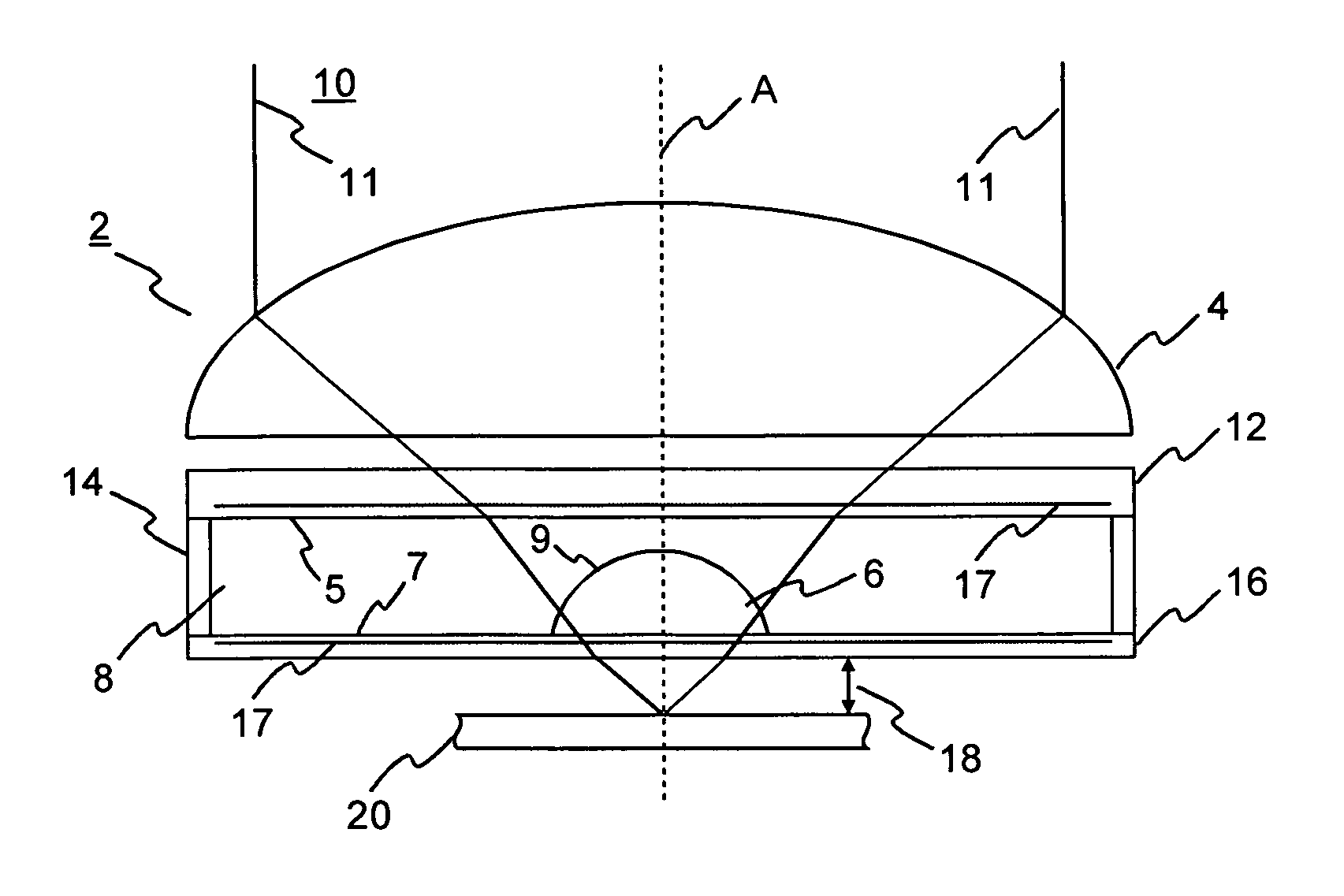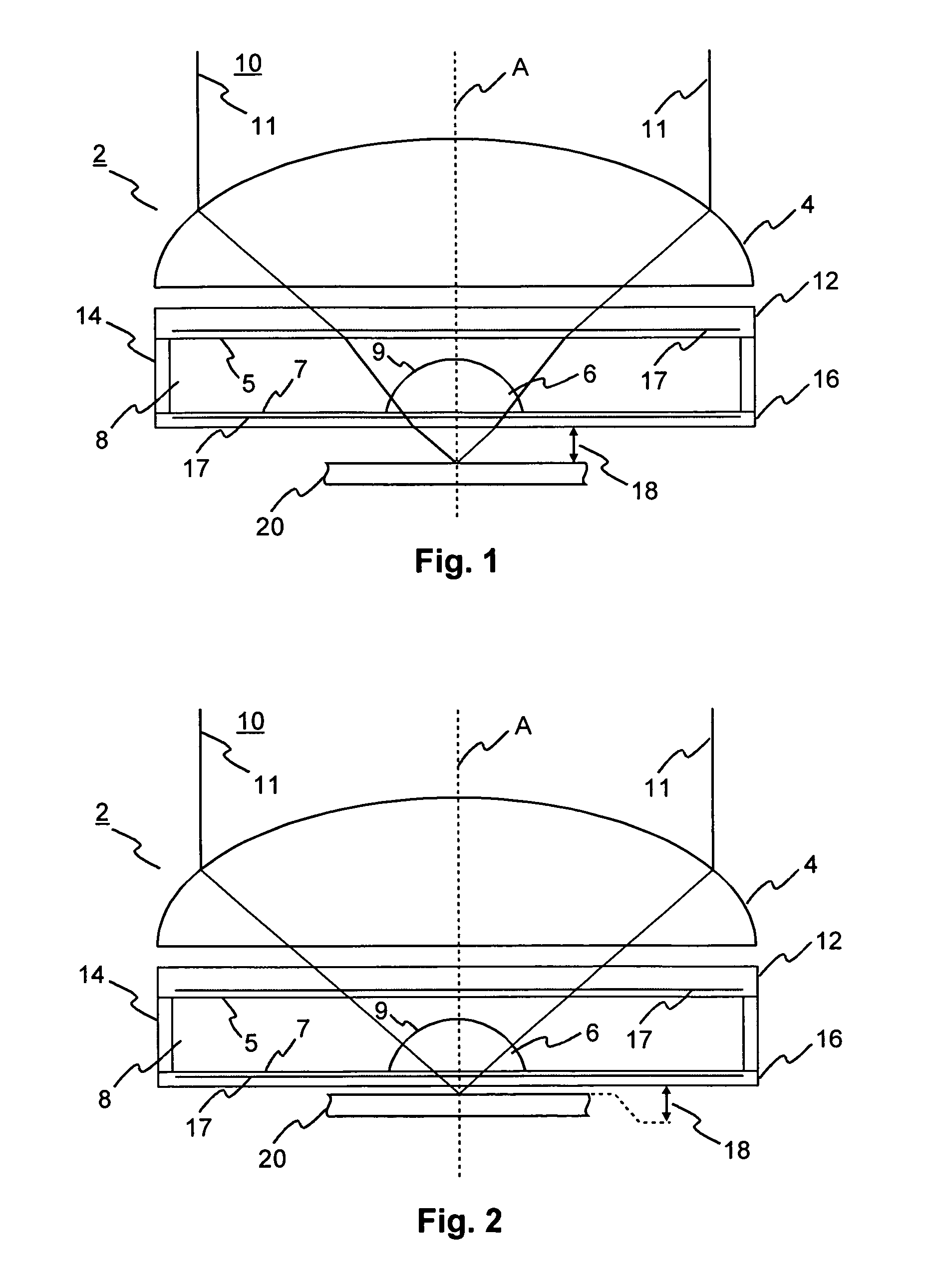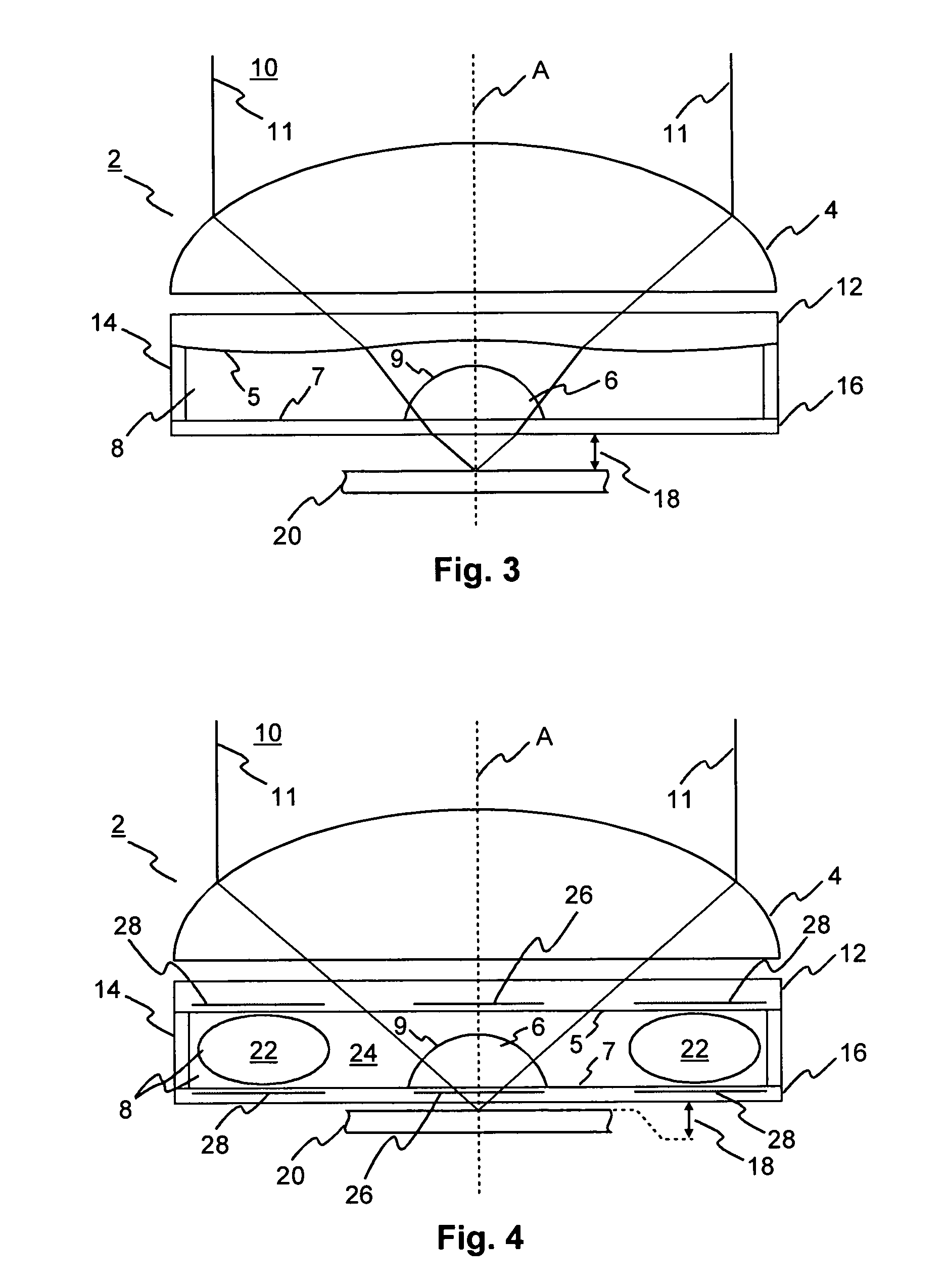Objective lens and optical data storage apparatus comprising the objective lens
a technology of optical data storage and objective lens, which is applied in the field of objective lens, can solve the problems of inconvenient use, inconvenient operation, and inability to meet the needs of data recording,
- Summary
- Abstract
- Description
- Claims
- Application Information
AI Technical Summary
Benefits of technology
Problems solved by technology
Method used
Image
Examples
Embodiment Construction
[0031]A first embodiment of an objective lens 2 according to the invention is shown in FIGS. 1 and 2, wherein FIG. 1 depicts the objective lens 2 in a far-field mode, whereas FIG. 2 depicts the objective lens 2 in a near-field mode. The objective lens 2 comprises a lens 4, a solid immersion lens 6 and an optical element 8 having a variable refractive index. The aforementioned units, i.e. the optical element 8, the lens 4 and the solid immersion lens 6 are disposed on a common optical axis A, drawn as a dashed line. According to the embodiment shown in FIGS. 1 and 2, the optical element 8 is a liquid crystal confined in a cavity that is limited by a top part 12 and a bottom part 16 spaced apart by an annular ring 14 in a direction of the optical axis A. The shape of the optical element 8 is determinate by a shape of a surface facing the cavity of the top and bottom part 12, 16, respectively. These interfaces between the liquid confined by the cavity and said inner surfaces determine ...
PUM
| Property | Measurement | Unit |
|---|---|---|
| refractive index | aaaaa | aaaaa |
| refractive index | aaaaa | aaaaa |
| refractive index | aaaaa | aaaaa |
Abstract
Description
Claims
Application Information
 Login to View More
Login to View More - R&D
- Intellectual Property
- Life Sciences
- Materials
- Tech Scout
- Unparalleled Data Quality
- Higher Quality Content
- 60% Fewer Hallucinations
Browse by: Latest US Patents, China's latest patents, Technical Efficacy Thesaurus, Application Domain, Technology Topic, Popular Technical Reports.
© 2025 PatSnap. All rights reserved.Legal|Privacy policy|Modern Slavery Act Transparency Statement|Sitemap|About US| Contact US: help@patsnap.com



